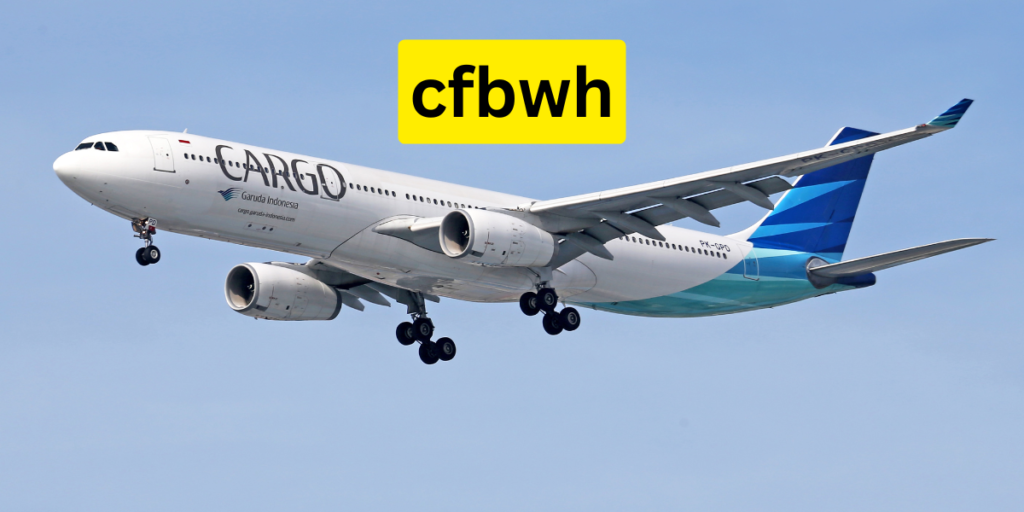In a world where seamless connectivity is no longer just a luxury but a necessity, the demand for innovative solutions has never been greater. Enter CFBWH—the cutting-edge framework set to redefine how we connect and communicate in an increasingly digital landscape. As industries evolve and our reliance on technology deepens, CFBWH stands at the forefront of this revolution, promising to enhance efficiency and streamline interactions across various sectors. In this blog post, we’ll explore how CFBWH is not only changing the game for current connectivity standards but also paving the way for a future where technology works smarter, faster, and more harmoniously than ever before. Buckle up as we delve into the transformative power of CFBWH!
Introduction to CFBWH (explain what it stands for and its significance)
In a world driven by technology, connectivity is the lifeblood of innovation and progress. As we navigate through an ever-expanding digital landscape, the demand for robust and efficient communication standards has never been greater. Enter CFBWH—an acronym that stands for Cutting-Edge Future Bandwidth Wireless Hybrid. This groundbreaking standard promises to transform how devices connect, communicate, and collaborate. With its potential to streamline operations across various sectors, CFBWH is more than just a buzzword; it’s a significant leap toward a smarter future where efficiency reigns supreme. Let’s delve into what makes CFBWH so crucial in today’s tech-driven society and explore its many benefits over traditional connectivity standards.
The current state of connectivity standards and protocols
Connectivity standards and protocols are the backbone of modern communication. They ensure devices can speak to each other seamlessly, yet their evolution has been gradual.
Presently, we see a mix of established frameworks like Wi-Fi, Bluetooth, and emerging technologies such as 5G. Each standard comes with its strengths but also limitations in terms of speed, range, or energy efficiency.
The rapid growth of IoT demands more from these systems. Current solutions struggle to accommodate the increasing number of connected devices while maintaining optimal performance.
Interoperability remains a significant challenge too. Different industries often rely on varied standards that complicate integration efforts across platforms.
As technology advances at breakneck speed, it’s clear that existing connectivity protocols need a refresh for greater efficiency and versatility.
The need for a more efficient and effective solution
As technology evolves, our demands for connectivity grow exponentially. Existing standards often struggle to keep pace with the influx of devices and services. This gap creates inefficiencies that can hinder innovation across various sectors.
Current protocols frequently face limitations in speed, reliability, and scalability. These constraints can lead to frustrations for businesses and consumers alike. A more effective solution is essential to bridge this widening divide.
Moreover, as industries increasingly rely on data-driven decisions, seamless connectivity becomes crucial. The need for real-time communication cannot be overstated; delays or disruptions in connectivity can result in lost opportunities.
In a world where everything is interconnected, outdated standards pose significant challenges. Addressing these issues head-on not only enhances user experience but also paves the way for future advancements in technology and industry practices.
What is CFBWH? (definition and explanation of how it works)
CFBWH stands for “Cloud-Focused Bandwidth and Wireless Harmony.” This innovative standard aims to streamline connectivity across various devices and networks.
At its core, CFBWH integrates cloud technology with bandwidth management. It optimizes data transfer by intelligently allocating resources based on real-time demand. This means that when more users connect, the system automatically adjusts to ensure seamless performance.
The underlying mechanism relies on advanced algorithms that analyze user behavior patterns. By predicting peak usage times, it dynamically redistributes network capacity where it’s most needed.
This adaptability allows CFBWH to support a wide range of applications—from smart homes to industrial IoT systems—while maintaining low latency and high reliability. As digital infrastructure evolves, CFBWH positions itself as a vital enabler of efficient communication in an increasingly interconnected world.
Advantages of using CFBWH over traditional standards
CFBWH offers significant advantages compared to traditional connectivity standards.
First, its efficiency in data transmission is remarkable. Unlike older protocols that can become bogged down with high traffic, CFBWH optimizes bandwidth usage for seamless communication.
Another key benefit is interoperability. CFBWH supports various devices and platforms, ensuring compatibility across a diverse range of technologies. This flexibility fosters innovation and collaboration among developers.
Additionally, security features built into CFBWH enhance protection against cyber threats. It employs advanced encryption methods that safeguard sensitive information during transmission.
The adaptability of CFBWH also stands out in dynamic environments. It can quickly adjust to changing network conditions without compromising performance or reliability.
These advantages make CFBWH an attractive choice as industries evolve toward more connected solutions. The potential for improved user experiences and operational efficiencies is substantial.
Real-life examples or case studies of how CFBWH has improved connectivity
In a bustling city, a smart transportation system implemented CFBWH to enhance traffic management. By connecting various vehicles and infrastructure elements, real-time data sharing reduced congestion significantly. Commuters enjoyed smoother rides while emissions dropped.
A healthcare facility adopted CFBWH for its patient monitoring systems. This allowed devices to communicate seamlessly, enabling faster response times during emergencies. Doctors had access to crucial information at their fingertips, improving patient outcomes.
Another intriguing case involved agricultural technology where farmers used CFBWH for precision farming. Sensors in the fields provided instant feedback on soil conditions and crop health. This approach increased yield while minimizing resource use.
These examples demonstrate how CFBWH is not just an abstract concept but a practical solution transforming connectivity in diverse sectors. The impact resonates beyond mere efficiency; it reshapes our daily lives and paves the way for innovative applications we have yet to explore.
Challenges and limitations of implementing CFBWH
Implementing CFBWH comes with its own set of challenges. One significant hurdle is the need for widespread industry adoption. Many organizations are hesitant to shift from established protocols, fearing disruptions during the transition.
Another limitation lies in interoperability. Existing systems may not easily integrate with CFBWH, leading to compatibility issues that could hinder effectiveness.
Additionally, there are concerns about security and privacy. As connectivity standards evolve, ensuring data protection becomes increasingly complex.
Infrastructure costs can also pose a barrier. Upgrading technology and training personnel requires investment that some companies might not be willing or able to make.
Finally, regulatory compliance presents challenges as well. Navigating new guidelines while adhering to existing laws may complicate implementation efforts further.
Potential impact of CFBWH on various industries (e.g. healthcare, transportation, communication)
CFBWH stands to transform multiple industries through its robust connectivity features. In healthcare, real-time data sharing can enhance patient monitoring and streamline telemedicine services. It allows for seamless communication between devices, ensuring critical information is always at hand.
Transportation systems will also benefit significantly from CFBWH. Enhanced connectivity means more accurate tracking of vehicles and improved traffic management. This efficiency can lead to reduced congestion and lower emissions.
The communication sector isn’t left behind either. With CFBWH, businesses can achieve faster data transfers and better integration across platforms. This opens the door for innovative applications that enhance collaboration among teams regardless of location.
Moreover, industries like manufacturing could experience increased automation capabilities thanks to reliable connections powered by CFBWH technology. As a result, productivity may surge while operational costs decrease significantly across various sectors.
Comparison to other emerging connectivity technologies
CFBWH stands out among other emerging connectivity technologies like 5G, Wi-Fi 6, and Li-Fi. Each approach has unique features aimed at enhancing communication speed and reliability.
While 5G offers ultra-fast mobile internet, CFBWH excels in optimizing network efficiency. It reduces latency significantly compared to traditional standards. This makes it ideal for applications requiring immediate responses.
Wi-Fi 6 focuses on boosting capacity in crowded areas but may still struggle with device compatibility issues. CFBWH integrates seamlessly across various platforms, ensuring a smoother user experience.
Li-Fi leverages light for data transmission, offering high speeds indoors but facing constraints outdoors. CFBWH maintains performance regardless of environmental factors, making it a versatile choice for diverse settings.
As industries continue to evolve technologically, the adaptability of CFBWH positions it as a frontrunner alongside these emerging solutions. Its innovative approach addresses specific challenges that others might overlook.
Future possibilities and developments for CFBWH
The future of CFBWH is filled with exciting possibilities. As technology evolves, so too does the potential for enhanced connectivity standards that can be seamlessly integrated into existing systems.
Developers are exploring ways to incorporate artificial intelligence and machine learning to optimize data transmission further. This could lead to a smarter, self-adjusting network that adapts in real-time based on user demands.
Moreover, advancements in quantum computing may provide a significant boost to CFBWH capabilities. With immense processing power, we could see unprecedented speeds and security levels.
Collaboration across industries will also play a vital role. By uniting tech innovators with businesses in healthcare or transportation, tailored solutions can emerge that address sector-specific challenges.
As global connectivity becomes increasingly critical, the need for robust standards like CFBWH will only grow stronger. The journey ahead promises innovative developments that can reshape how we connect and communicate worldwide.
Conclusion: How CFBWH is revolutionizing connectivity standards for a more efficient future
The emergence of CFBWH marks a pivotal moment in the evolution of connectivity standards. By addressing the limitations found in current protocols, it provides a more streamlined and effective approach to communication across various platforms. The advantages of adopting CFBWH are evident; enhanced speed, reliability, and adaptability stand at its core.
Real-life applications showcase how industries like healthcare and transportation can benefit from this innovative technology. As organizations begin to embrace CFBWH, we witness a shift toward improved connectivity that meets modern demands.
While challenges exist in implementing these new standards—such as integration with legacy systems—the potential rewards far outweigh the obstacles. With continued advancements on the horizon, CFBWH is poised to redefine our expectations for connectivity across sectors.
As we look ahead, it’s clear that CFBWH is not just an upgrade but rather a revolution in how devices communicate effectively and efficiently. Embracing this change will undoubtedly pave the way for smarter solutions tailored to meet future needs.






